Cham Village
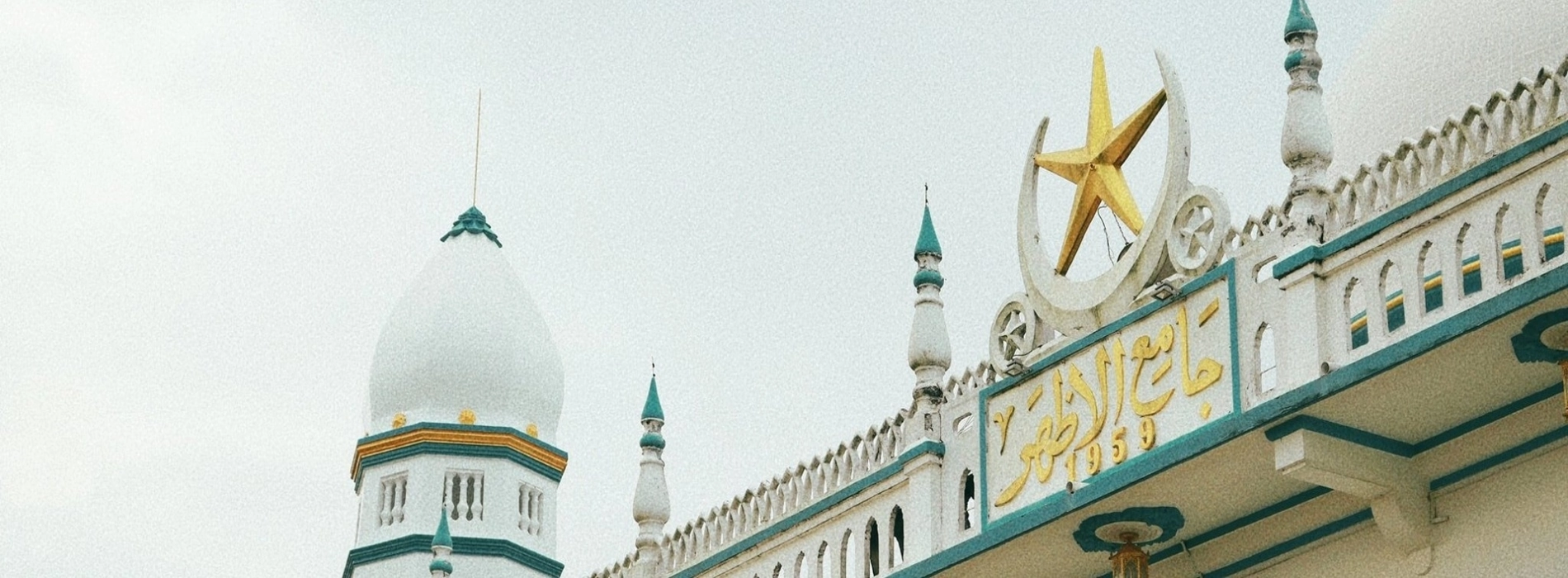
An Giang is a peaceful land where many ethnic groups live together. Among them, the Cham people reside in small villages, preserving their customs, culture, and religion for generations. Their way of life is truly captivating and will surely charm you. Join us in discovering the warm and welcoming Cham community through this article by Asia King Travel!
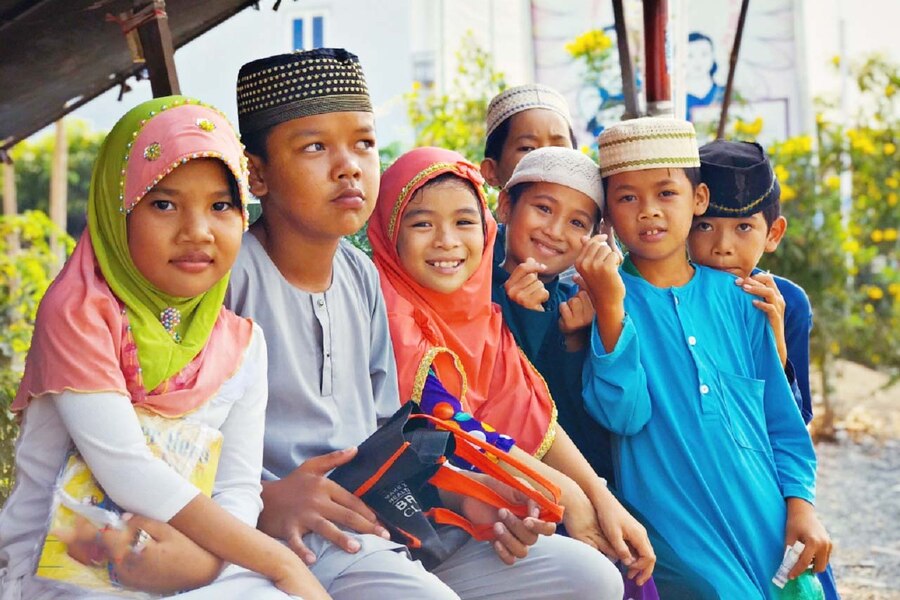
Cham children in An Giang. Photo: VOV
Cham community is mainly concentrated along both banks of the Hau River in Tan Chau Town, An Giang Province. They originate from the Champa Kingdom in Ninh Thuan and migrated here due to historical events. Additionally, some sources suggest that they came from Malaysia and Indonesia, which is why Islam is the predominant religion in the area. Despite these differences, they live in harmony and communicate in Vietnamese.
From Ho Chi Minh City, take National Highway N2 to reach An Giang Province. After crossing Hau River, turn onto National Highway 91 and head north. The 50-kilometer journey to Chau Doc City may take some time, but the scenic views along the riverbanks will make you want to keep going without stopping. Once you reach the city, Cham village is just a few kilometers away. The last route is crossing Hau River through Chau Doc Bridge.
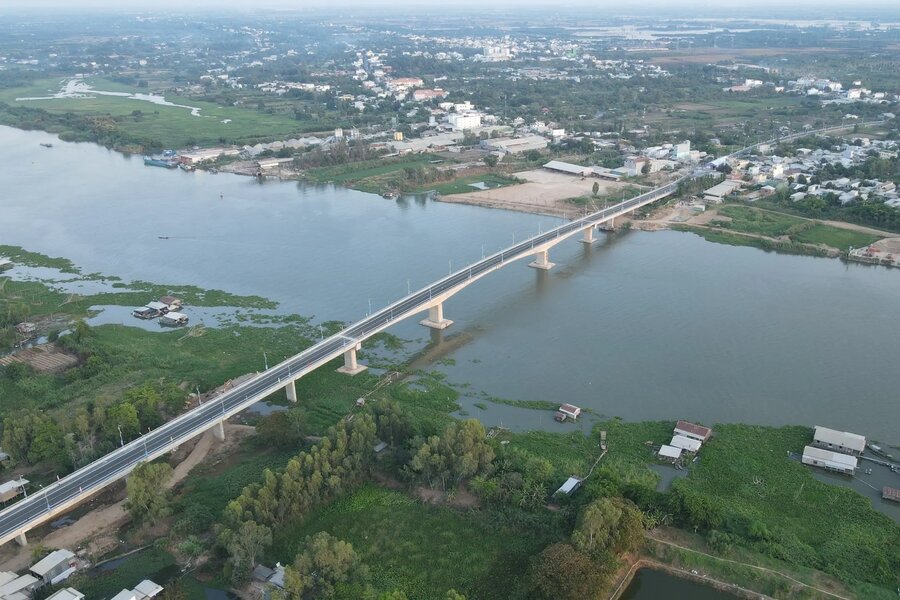
Chau Doc Bridge has been built recently to reduce time taking a ferry. Photo: Thanh Nien
You can visit the village at any time of the year because An Giang is beautiful year-round and is rarely affected by weather or the sea (that’s why locals believe the gods bless their land.) However, you might want to plan your trip around some Islamic holidays to experience their vibrant festivals, such as Ramadan, Roya Day, Muhammad’s birthday, etc. (according to the Islamic calendar).
Suggested for you: Southern Vietnam Cycling Tour 5 days: Saigon & Mekong Delta
With a large Cham Muslim community, the region is home to many mosques and smaller prayer halls, the most notable being Mubarak Mosque, which has been recognized as Vietnam’s national heritage site. At first glance, it leaves visitors in awe with its grandeur, intricate yet elegant patterns, and stunning architecture. Its design resembling mosques in the Middle East, makes it a unique and striking landmark in Vietnam.
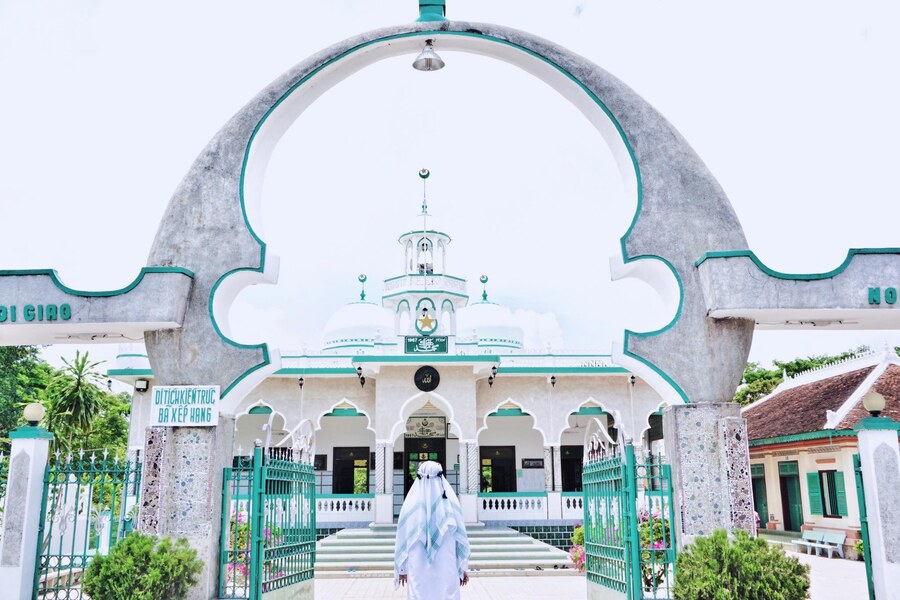
The mosque showcases traditional Islamic architecture, a religion rarely found in Vietnam. Photo: Top 7 Vietnam
As a place where many people gather for prayer, the mosque has multiple entrances and is supported by eight sturdy columns inside. These round pillars are large yet well-proportioned and evenly spaced. The roof has a large, oval-shaped tower with two distinct tiers. The base of the tower is designed with a crescent moon and star, symbols of Islam.
The interior of the mosque is spacious and airy, designed with simplicity yet featuring a mihrab (a recessed arch in the wall). This ensures that worshippers always face the direction of the setting sun during prayer. Annually, the mosque hosts the three major Islamic holidays mentioned earlier. On these days, a large number of Cham people gather at the mosque for worship, creating a unique and fascinating cultural tradition.
Since the Cham people here follow Islam, their customs are closely tied to Islamic traditions. Men wear a sarong called "blanket” while women wear a similar garment referred to as a skirt. Men also wear caps, elderly men wear white caps, while younger men wear black ones. Women cover their heads with a Mat’ra scarf.
Men do not drink alcohol. Cham women typically stay at home, focusing on household chores and weaving. They do not eat pork and are not allowed to wear gold jewelry.
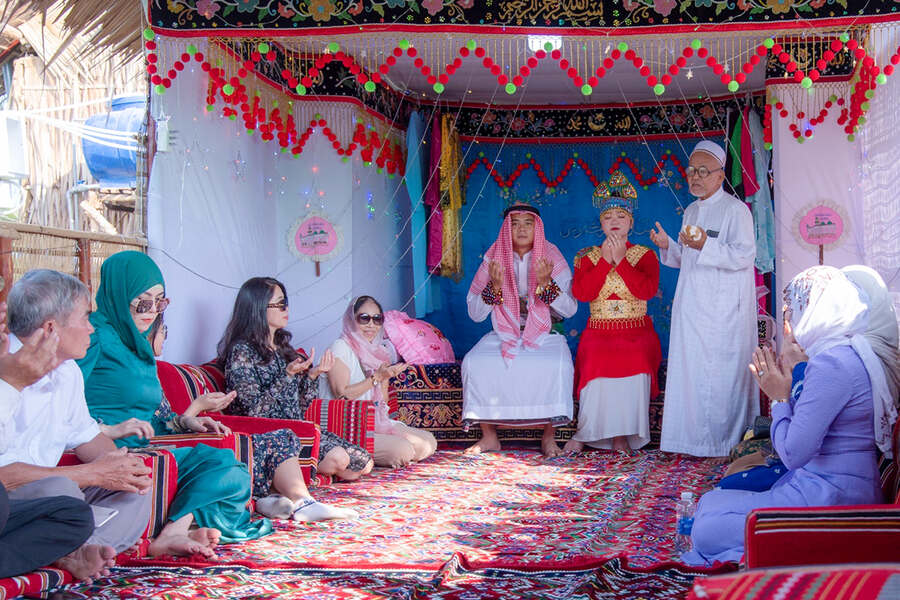
Visitors witness a reenactment of a traditional Cham wedding ceremony. Photo: An Giang Newspapers
Their brocade weaving tradition dates back hundreds of years, possibly passed down from the era of the Champa Kingdom, as reflected in the similarities between their brocade and that of the Cham people in Ninh Thuan Province. However, they have still created their own unique patterns and designs.
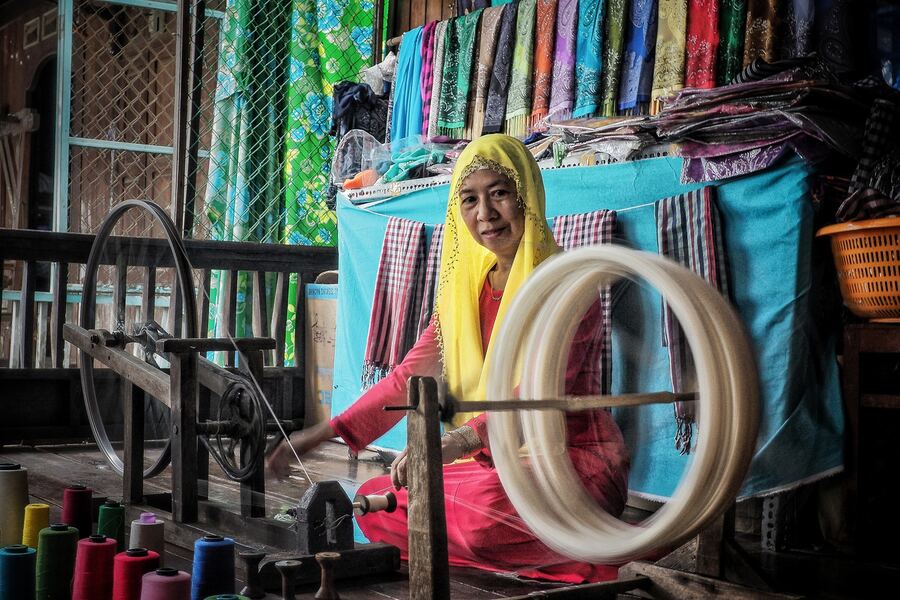
A Cham woman beside a weaving loom. Photo: Tham hiem Mekong
In addition to weaving, the villagers also practice traditional handmade jewelry crafting. Alongside the handwoven brocade products, shops sell beautifully crafted jewelry such as bracelets, necklaces, earrings, and more, all made with great attention to detail and artistry.
Alongside traditional brocade weaving and jewelry making, one of the most distinctive features of Cham Chau Giang culture is its centuries-old wooden stilt houses. Unlike the stilt houses of other ethnic groups, Cham stilt houses here are built much higher and made entirely from precious hardwood.
According to feng shui principles, the front of the house must always face south and have a wooden staircase for access. The two main entrance doors are slightly lower than a person's height, so visitors must bow their heads upon entering, like a respectful gesture toward the homeowner. The type of wood used for construction often reflects the family’s status, depending on their financial means.
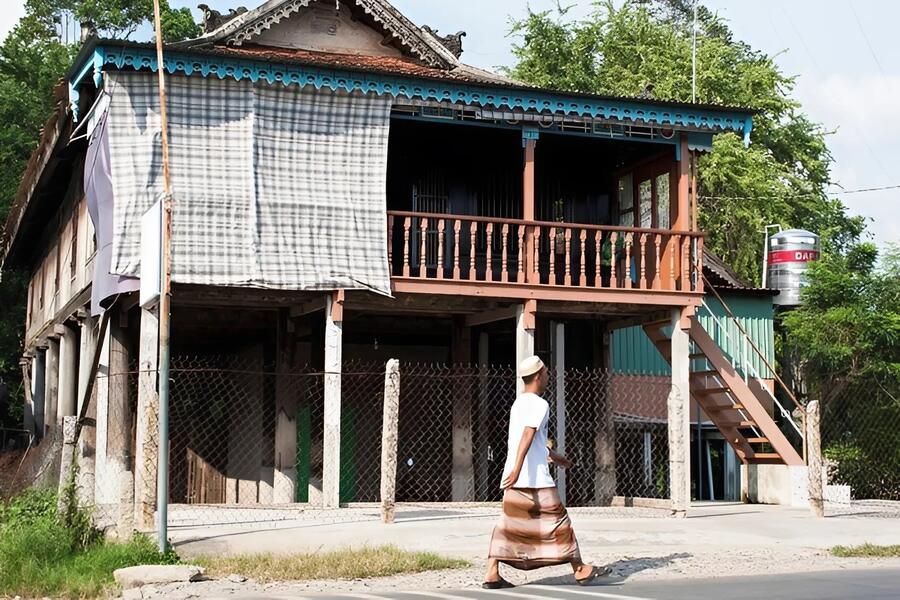
The stilt house is spacious, accommodating multiple generations living together. Photo: Luhanhvietnam
One unique feature of these homes is the absence of tables and chairs. Homeowners typically lay out mats or carpets on the wooden floor for both the residents and guests to sit on. Additionally, there is a private room exclusively for women, where men are not allowed to enter.
Com ni and ca pua are two traditional dishes of the Cham people in An Giang, often prepared for special occasions or to serve guests.
Com ni is a fragrant rice dish cooked with milk and coconut milk. Depending on personal taste, the cook may also add raisins or cashew nuts to mix with the rice. Once cooked, the rice is soft and sticky but not mushy, having a rich flavor.
Cham people usually eat com ni with ca pua, a beef dish similar to curry. However, unlike regular curry, ca pua is made solely with beef, without potatoes or any other ingredients. It is also significantly spicier, which is a perfect mix with the rice's sweetness.
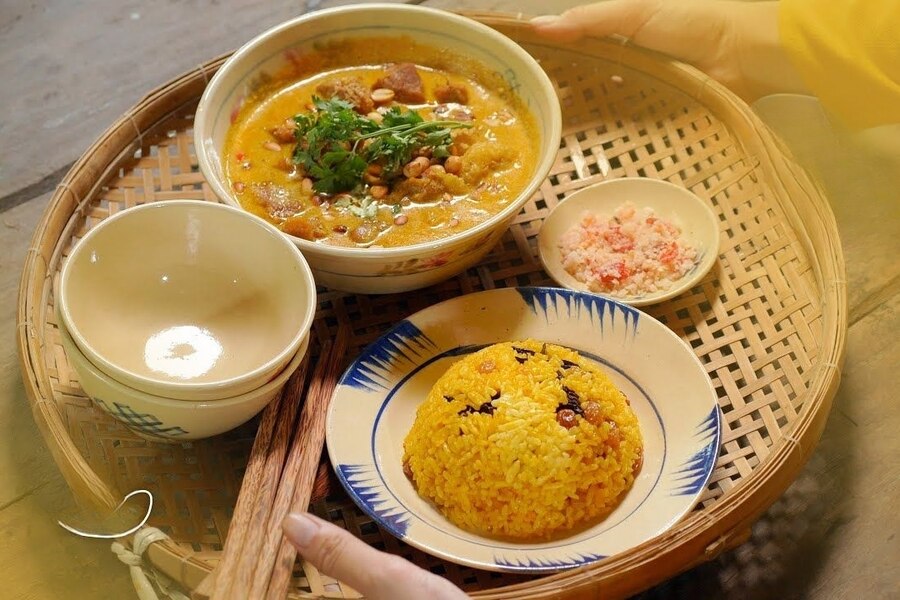
Com ni and ca pua. Photo: 2dep
This is a popular snack you can find in the village market. The rice flour used for the cake is fermented with palm sugar, then poured onto a cast-iron pan and grilled until golden brown. Once cooked, the cake develops a crispy, beautifully golden edge. The process is quite simple, and you can even try making one yourself.
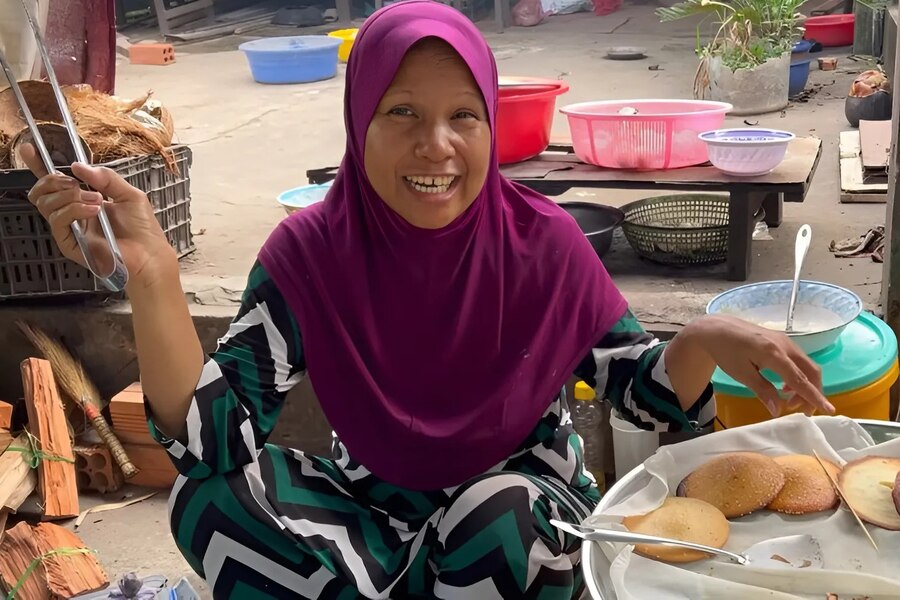
Ms. Rofiah usually sells Haco pancakes at the locals market. Photo: MIA
Cham village is a fascinating destination to explore a unique culture in Vietnam. Contact Asia King Travel and start preparing for your unforgettable journey!
Suggested for you: Southern Vietnam Tour 10 days: Highlights Exploration